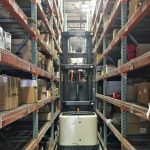Most people don’t think twice before picking up a hammer, plugging in a drill, or sanding back an old piece of furniture. The focus is usually on the task at hand — the satisfaction of getting something done yourself. But what often gets overlooked is eye protection. One small slip, a flying splinter, or a splash of paint thinner can change everything in an instant.
Something as simple as choosing the best safety glasses for your projects can be the difference between finishing a job with pride or spending hours in urgent care. Eye injuries at home are more common than many realise, and most are completely preventable with a single, easy precaution.
Why Eye Safety Deserves More Attention
Eye strain and irritation might feel minor, but the risks of home projects extend far beyond discomfort. In the average garage or workshop, dangers come in many forms:
- Flying debris: Sawdust, metal fragments, and plaster dust can all drift into your eyes.
- Chemical splashes: Paints, solvents, and adhesives often contain irritants or corrosive ingredients.
- Sharp tools: Even a quick glance at a misfiring tool can expose your eyes to sudden hazards.
- Bright light and glare: Poorly lit spaces or direct sunlight can intensify strain and fatigue.
Many people underestimate how quickly accidents can happen. In fact, most reported eye injuries take place at home — not on building sites or industrial floors where strict rules are already enforced.
What Can Go Wrong Without Protection
Ignoring eye safety can lead to more than a few hours of irritation. Common problems include:
- Scratched corneas: Even the tiniest fragment can scrape your eye, leaving you in pain for days.
- Infections: Dust or debris that isn’t flushed out can cause infections like conjunctivitis.
- Permanent damage: Some chemicals or deep cuts may leave lasting vision problems.
It’s easy to see why slipping on protective eyewear before starting a project is such a simple, yet crucial, step.
Simple Ways to Protect Your Eyes During Projects
1. Invest in Proper Protective Gear
Choose glasses or goggles designed for the type of project you’re doing. A good pair should:
- Fit snugly with no side gaps.
- Be comfortable enough to wear for long periods.
- Offer impact resistance for high-risk tasks.
2. Improve Your Lighting
Dim or uneven lighting forces your eyes to work harder, causing strain. Use task lamps or natural light to ensure you can see clearly without squinting.
3. Control Dust and Debris
- Clean as you go to reduce airborne particles.
- Use a vacuum with a HEPA filter if sanding or drilling.
- Keep windows or doors open to maintain airflow.
4. Take Eye Breaks
Like any muscle, your eyes need rest. Follow the 20-20-20 rule: every 20 minutes, look at something 20 feet away for 20 seconds.
5. Keep Rinse Solutions Nearby
Saline or artificial tears can provide instant relief if small particles get in your eyes. Quick access reduces the chance of further irritation.
Everyday Scenarios You Might Recognise
- You’re drilling into plasterboard, and dust falls directly into your eyes.
- A splash of paint thinner rebounds off a wall and stings instantly.
- You’re sawing timber, and a fine spray of sawdust lingers in the air, making your eyes itch.
Each situation is common, and each is easily prevented with the right protection.
Building a Safer Mindset
The trick isn’t just knowing the risks — it’s making safety a habit. Think of it like fastening a seatbelt. At first, it feels like a small inconvenience, but soon it becomes second nature. Making eyewear part of your DIY checklist ensures you’re always prepared, no matter how small the project seems.
For families, this habit sets the right example. If kids or curious visitors see you consistently prioritising protection, they’re more likely to follow suit.
Protecting Your Vision for the Long Term
DIY projects should be satisfying, not hazardous. By investing in protective eyewear, improving your workspace, and making eye safety part of your routine, you reduce the risks dramatically.
Your eyesight is irreplaceable — and safeguarding it doesn’t take much. The most overlooked safety step is also the simplest one: protecting your eyes before you even start. Next time you’re tempted to skip it, remember that prevention is easier than recovery.







